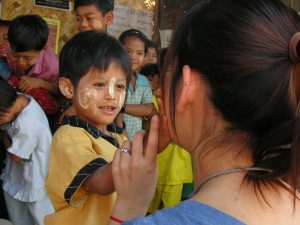It’s no secret that for decades Asian economies have leaned on migrant workers to do low-paid manual labor. From rickshaw drivers to construction workers, millions of migrant workers have helped fuel emerging economies and in return have sent home billions of dollars in remittances.
They’ve also been open to abuse and exploitation with few worker’s rights or access to healthcare, while stuck in cramped lodgings.
Millions of children have been impacted by these migration flows – some because they have crossed a border alone or with their families, others because they have been left at home by migrating parents.
For children who follow their parents abroad, life is often a struggle. Migrants are mostly unprotected by social safety nets, meaning there are enormous hurdles to accessing healthcare and education. Costs, language barriers, and stigma are just a few of the obstacles.
Now these children and their families face a new threat from the global COVID-19 pandemic, which has a disproportionate impact on people who cannot work from home to shield from the virus.
Before COVID-19, the millions of migrant children in Asia were among the planet’s most vulnerable people, having followed their parents in a desperate quest to find jobs, access essential services, as well as escape destitution. These children existed in the shadows of society, struggling to access healthcare and education, and at constant risk of abuse and exploitation.
As the pandemic’s impact hit, labor markets collapsed from India to Singapore, leaving migrant workers and their families impoverished and sometimes unable to pay for a ticket home.
Migrants deserve our protection, not least because of what they contribute to society. In many ways, migrants are a lifeblood of the economy in Asia.
Migrant workers make up 37 percent of the workforce in Singapore, 15 percent in Malaysia, and 11 percent in Thailand. In other countries, including Bangladesh, Indonesia, Nepal, and the Philippines, remittances from abroad contribute significantly toward the national GDP.
This issue has reached the global policy agenda. In December 2018, governments across the world drew up what’s colorlessly called the Global Compact for Safe, Orderly and Regular Migration, a landmark document to protect the rights of migrants.
The document is the first ever roadmap of policies and practices negotiated between governments on how to better protect migrants, with a welcome child-centric approach as one of its guiding principles.
Importantly, it outlines how to build on the benefits of migration and to address risks for those crossing a border in search of a better life. More than 150 countries have signed on so far, including a vast majority of states in Asia.
In early March, governments will participate in the inaugural U.N.-led regional review of the Global Compact in Asia, in a sense to chart their progress in practice.
There will be little to cheer. Despite some steps in the right direction, the Compact remains no more than a paper promise in far too many countries. Even when laws exist to protect migrants they are often poorly enforced.
Thailand is a notable exception, but even they have been slow to translate policy commitments into action.
For example, in 2019, police raids in the western Ranong province targeting Burmese teachers without proper permits forced at least 10 school closures. Thousands of students were denied education. Some have moved to government-run schools, but others have been forced into child labor in the fishing industry.
In Malaysia and Indonesia, migrant children can be held in cramped detention centers for long periods before deportation. This is cruel and damaging to children’s development. It also violates international law.
Studies also reveal how financial problems from COVID-19 have heightened domestic tensions, exposing children – and in particular girls – to domestic violence. There is also a risk that children will be forced into the labor market or early marriages to help families cope financially.
As the Global Compact is reviewed, governments must use it as an opportunity to renew efforts to implement it.
The rights of children must be at the heart of this process.
Governments must enact legislation to include migrants in national social safety nets, while teachers and healthcare staff should be trained on the needs of children. Migrant children must have access to key services that allow them to survive and thrive.
More, governments must cease the practice of criminalizing and detaining migrant children, and instead implement child-friendly and less harmful alternatives. Migrant children must be included and prioritized in national COVID-19 response plans, including access to vaccinations, and given the support needed to survive the financial crisis.
The more than 11 million children on the move in Asia deserve a life of hope and dignity. Now is the time to make that a reality. Protecting, supporting, and empowering children to live a decent life as part of our societies is everyone’s responsibility.
Olof Blomqvist is Save the Children International’s Humanitarian Policy & Advocacy Manager in Asia.
Daniela Reale is Save the Children’s Global Lead on Refugee, Migrant and Displaced Children.
































